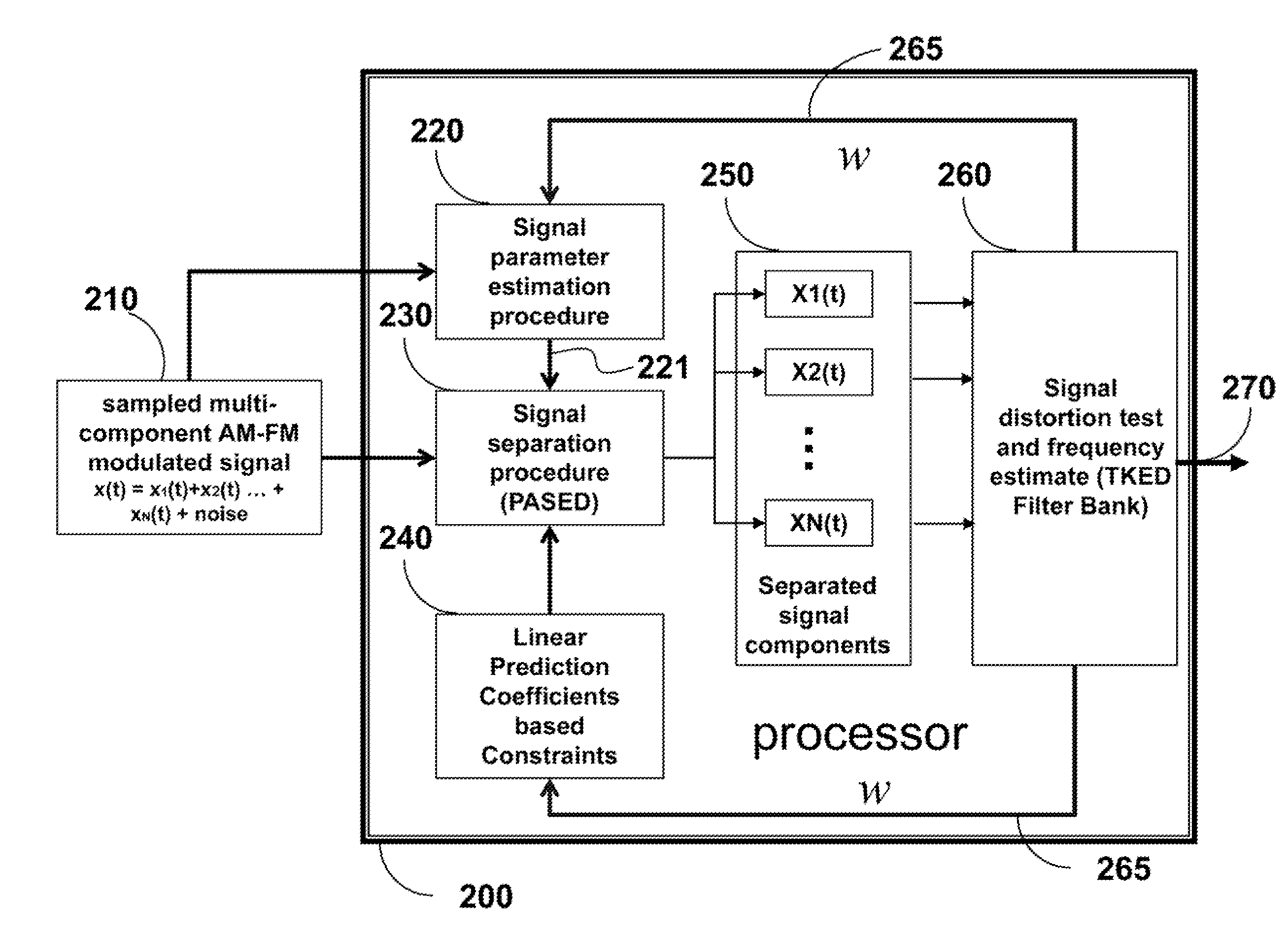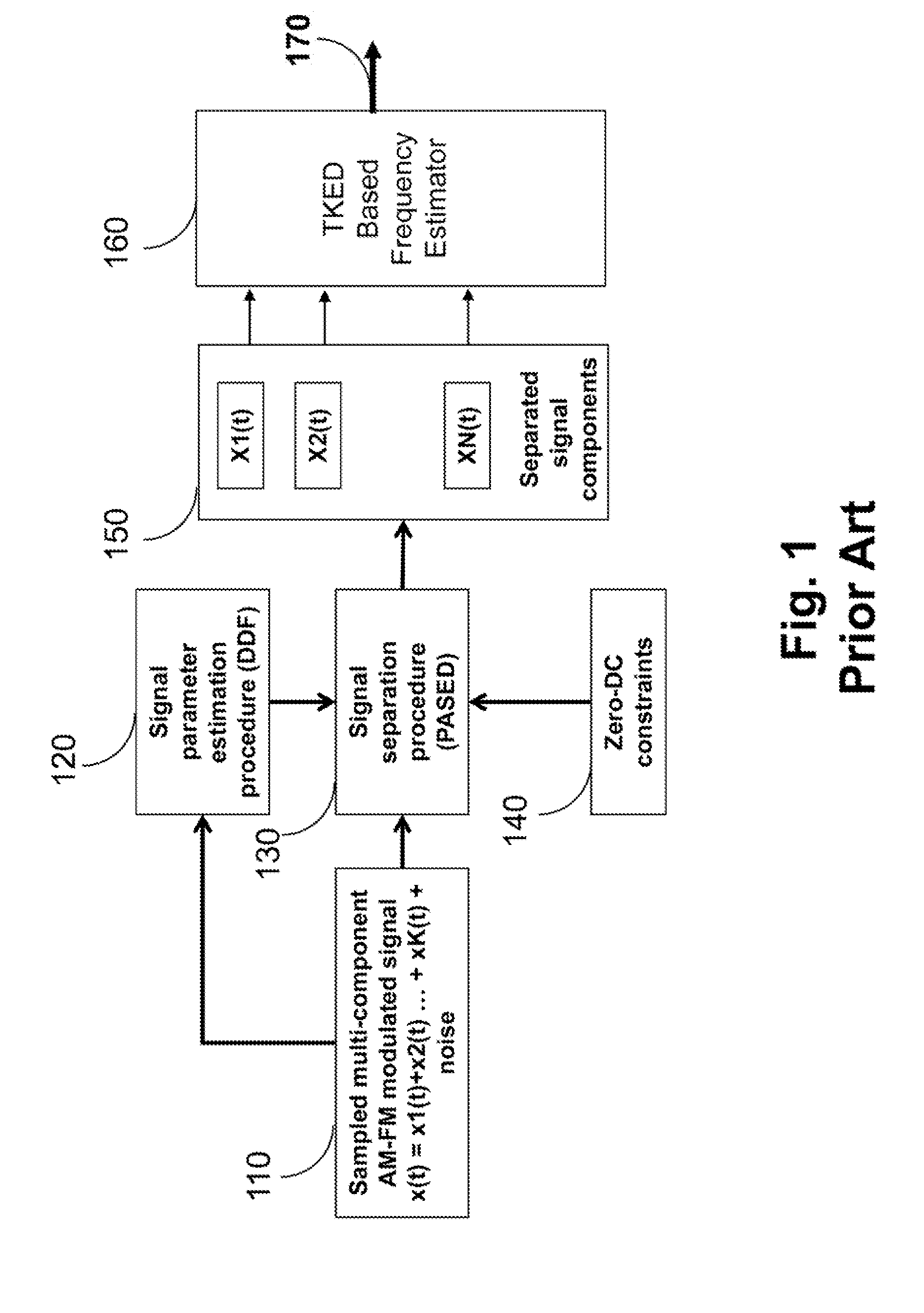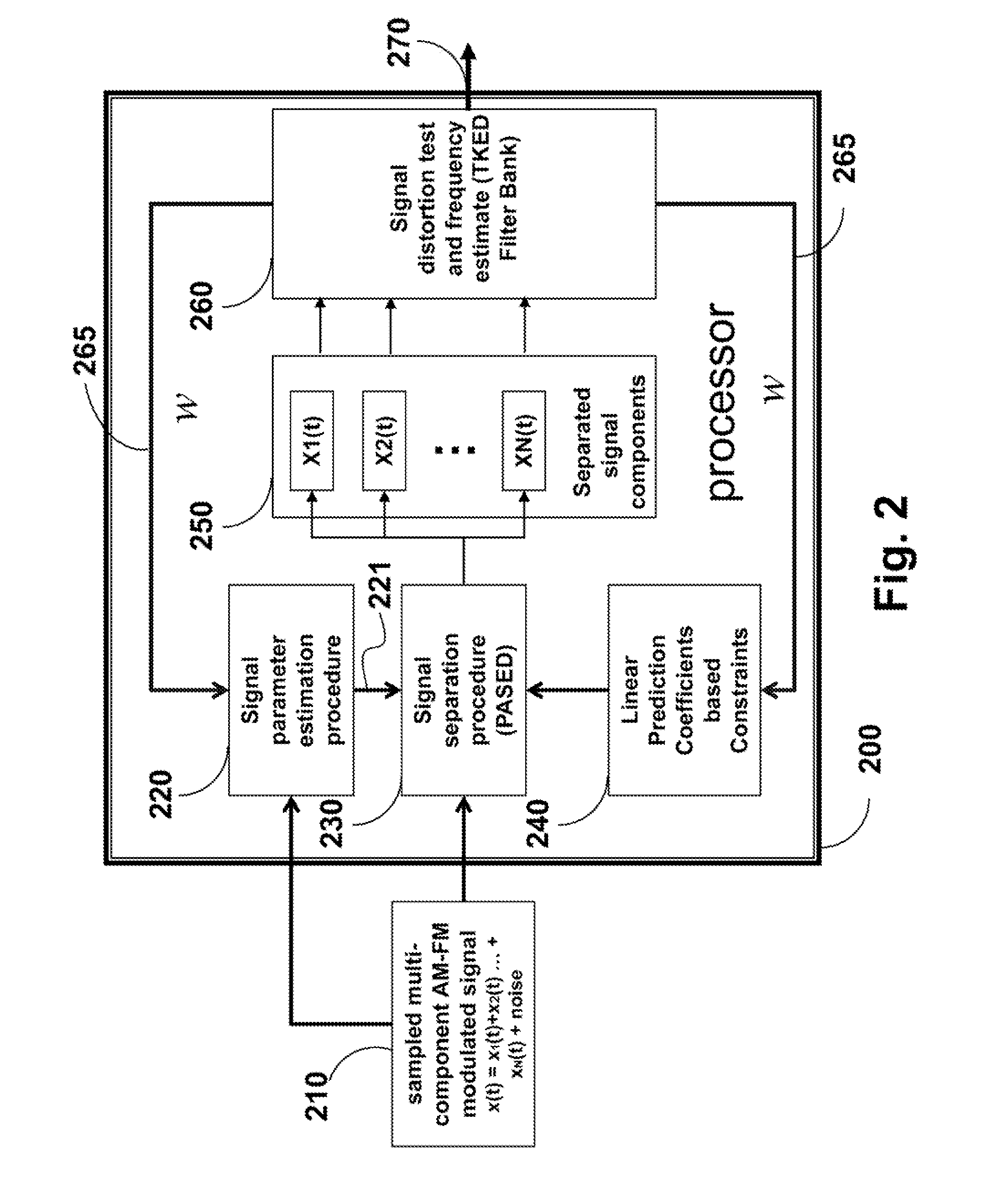Method for Separating Multi-Component Signals
a multi-component signal and signal technology, applied in the field of sigma processing, can solve the problems that the conventional pased b>130/b> may not output the optimal separation in low signal-to-noise ratio (snr) cases, and achieve the effect of improving the signal separation
- Summary
- Abstract
- Description
- Claims
- Application Information
AI Technical Summary
Benefits of technology
Problems solved by technology
Method used
Image
Examples
Embodiment Construction
[0015]As shown in FIG. 2, the embodiments of the invention provide a method for separating an input multi-component signal 210 into components 270 using Periodicity-based Algebraic Separation and Energy-based Demodulation (PASED). The multi-component signal can be represented as
x(t)=x1(t)+x2(t), . . . , +xN(t)+noise.
[0016]The method can be performed in a processor 200 connected to memory and input / output interfaces by buses as known in the art.
PASED Method
[0017]Components z1(n) and z2(n) of a two component signal are respectively periodic in intervals N1 and N2, such that
z1(n)=z1(n+N1)
z2(n)=z2(n+N2).
[0018]The multi-component signal z(n) includes z1(n) and z2(n) and noise w(n), such that
zg(n)=z1(n)+z2(n)+w(n)=z1(n+N1)+z2(n+N2)+w(n). (3)
[0019]If at least N1+N2−1 signal samples are measured, then the signals z1(n) and z2(n) can be separated. If N1 and N2 are estimated inaccurately, then the separation performance is degraded.
[0020]The composite signal samples zg(n) for n=1, 2, . . . ,...
PUM
 Login to View More
Login to View More Abstract
Description
Claims
Application Information
 Login to View More
Login to View More - R&D
- Intellectual Property
- Life Sciences
- Materials
- Tech Scout
- Unparalleled Data Quality
- Higher Quality Content
- 60% Fewer Hallucinations
Browse by: Latest US Patents, China's latest patents, Technical Efficacy Thesaurus, Application Domain, Technology Topic, Popular Technical Reports.
© 2025 PatSnap. All rights reserved.Legal|Privacy policy|Modern Slavery Act Transparency Statement|Sitemap|About US| Contact US: help@patsnap.com



